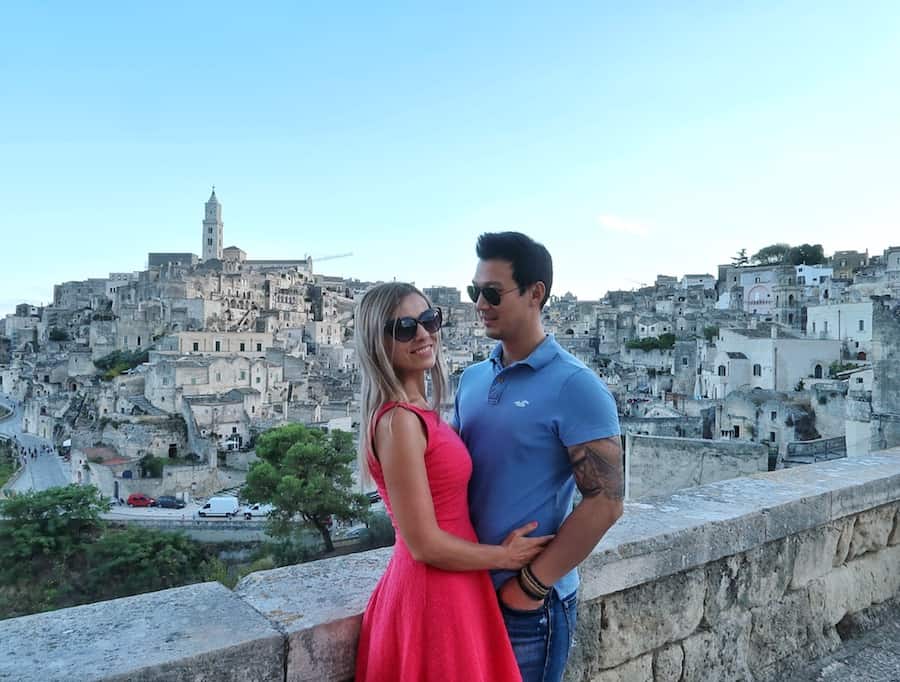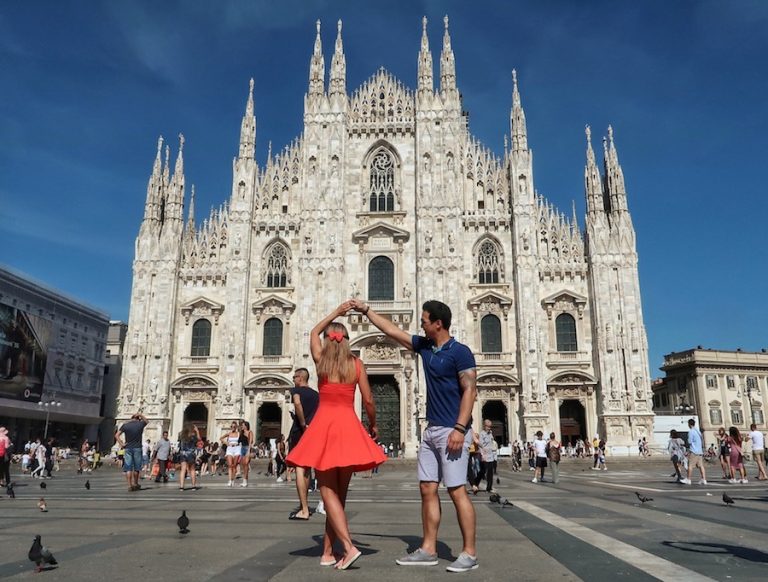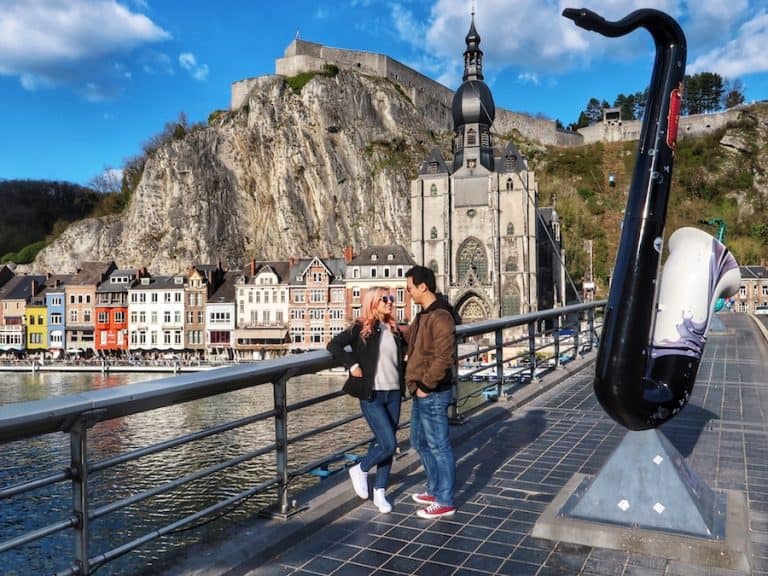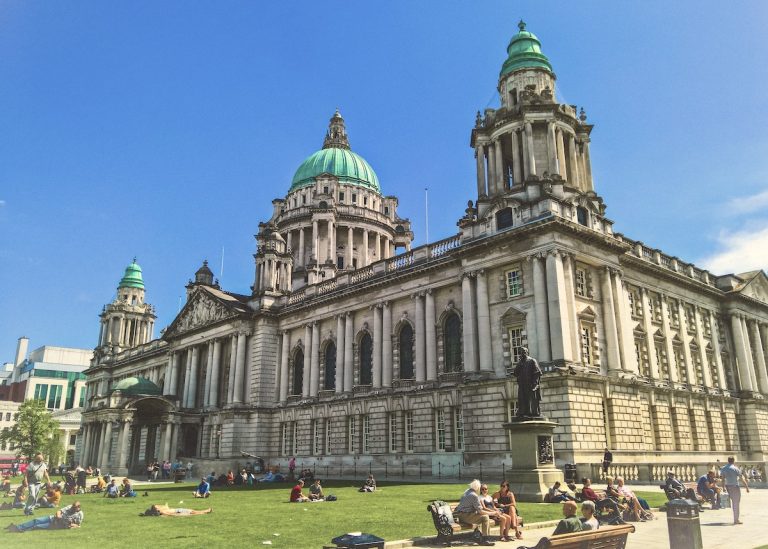15 Best Things To Do In Matera, Italy: Your Guide To The Sassi In 2026

Looking for the best things to do in Matera in 2026
Matera is one of those places you instantly fall in love with. We did just that! We crammed so much into our long weekend that we honestly wish we’d had an extra day or two.
With stunning landscapes, local food and beautifully preserved rock churches, it’s easy to see why Matera was named a European Capital of Culture in 2019. Not bad for a city once labelled a national embarrassment in the 1950s.
The old city is quickly becoming the place to visit in southern Italy. When I first saw photos of this ancient cave city a few years ago, I knew I had to go.
This guide covers the best things to do in Matera, with local highlights, practical tips and a few things I wish I’d known before going.
Best Things To Do In Matera, Italy
There’s more to Matera than just the caves. From rock-hewn churches and panoramic viewpoints to local food and cave hotels, there’s plenty to keep you busy.
Here’s a list of the best things to do in Matera – whether you’re here for a couple of days or planning a longer stay.
I’ve added all the key spots to the map in the section below so you can easily find your way around.
1. Explore the Sasso Barisano & Sasso Caveoso

This is the heart of Matera. These two ancient neighbourhoods are carved directly into the limestone cliffs and packed with narrow lanes, hidden courtyards and cave dwellings.
Sasso Barisano is more restored with boutique hotels and shops. Sasso Caveoso feels more rugged and raw. Both are worth exploring on foot.
💡Pro Tip: Wear proper shoes. The cobbled streets are bumpy and uneven, so comfortable footwear is recommended (I learned the hard way).
2. Walk through Piazza Vittorio Veneto


If you arrive by train, this is likely your first glimpse of the old city. It’s Matera’s main square, with a viewpoint that looks straight across the Sassi.
There’s a fountain, cafés, shops and a few small museums. It’s much busier at night, when the locals come out and the whole square lights up.
3. Visit Duomo di Matera

The cathedral sits on the highest ridge between the Sassi. You’ll spot the bell tower from most places in town.
Built in the 13th century, it reopened after a long restoration and now has a bright Romanesque interior, well-preserved frescoes and great views just outside the front doors
4. Start with the story at Casa Noha

Casa Noha is a locally run, small museum where you can watch a 25-minute multimedia presentation. Being the only two non-Italians there, we were given English language headsets as we learned about the history of Matera.
If you really want to understand the history of Matera, then Casa Noha should be one of the first places you visit.
5. Step inside a cave home at Casa Grotta di Vico Solitario

You may have noticed the many Casa Grotta signs as you walk around Matera. Literally meaning cave house, there are many of these grotte located around Matera, and they’re a great way to experience what it was like to live in these dwellings.
6. Visit the rock churches of Madonna de Idris, San Giovanni and Santa Lucia alle Malve

These rupestrian churches are carved straight into the rock and filled with centuries-old frescoes. You’ll find them near Piazza San Pietro Caveoso, which is also worth a visit since it is the only church in the Sassi not to be built into the rock surface
No photos are allowed inside, but the atmosphere is incredible. Buy the combo ticket if you plan to visit all three.
7. Admire The Views From Chiesa di Sant’Agostino

Perched above Sasso Barisano, this 18th-century church offers one of the best views in Matera. You’ll be able to see the ravine and all of Sasso Barisano, including the duomo.
The church itself is quiet and clean with a peaceful courtyard out front.
8. Visit The MUSMA Contemporary Art Museum
MUSMA is the Museum of Contemporary Sculpture in Matera. It’s not huge, but the mix of modern works inside a historic cave palace is genuinely clever.
A quiet, thoughtful stop in the middle of the old town.
9. Go underground at Palombaro Lungo
Beneath the main square lies a giant cistern carved from stone. It once stored drinking water for the whole city, and you can still walk through the cavernous space today.
Due to the low rainfall in the region, it was essential to conserve the water that fell. Guided tours in English are only available on a few tours each day.
10. Hike To The Belvedere Murgia Timone

You may have noticed some small caves across the ravine on the hillside. That is Parco della Murgia, a national park of over 150 rupestrian churches. To access some of the churches, you will need to hire a local guide.
Try and time your visit for the late afternoon. After exploring the churches, you can witness one of the most spectacular sunsets you’ll ever see. As the sun sets, you’ll see the Sassi light up across the ravine! It’s absolutely magical! Just remember to bring mosquito repellent!
11. Eat Authentic Pane di Matera

The ancient bread of Matera is something you’ll try many times. There are many stores with huge, odd-shaped, dark, crusted lumps on their shopfront. Made from local ingredients, the crumb has a slightly yellow colour and is very similar to sourdough.
One local told us that the thick crust meant that the bread won’t start to spoil until it is cut. We’re not sure if this was true or not, but it didn’t stop us from enjoying the bread many times during our stay.
12. Stay In A Cave Hotel

One of the things you absolutely have to do when visiting a cave city is, of course, stay in a cave! Many of the dwellings have been made into clean, comfortable and even luxurious rooms for visitors, making it one of the most unique experiences in Matera.
The cave hotels do tend to cost more due to their popularity, but there are now even budget and luxury options. Those on a day trip to Matera will certainly miss out on this cool little experience.
13. Dine In A Cave Restaurant
Just like the hotels, many restaurants in Matera are carved into the cliffs. It’s a small city, but there are plenty of good spots to try local specialities like orecchiette with turnip greens, lamb stew or crapiata soup.
Check reviews and book ahead in summer.
14. Visit the Crypt of the Original Sin
This one’s a little outside the city, but well worth the trip. About 15 minutes from Matera, the Cripta del Peccato Originale is a cave church known for its incredible 8th-century frescoes – often nicknamed the “Sistine Chapel” of rupestrian art.
You’ll need to book a guided tour in advance and, just a heads-up, photos aren’t allowed inside. But if you’re interested in early Christian art or rupestrian churches, this one’s pretty special.
15. See The Festa della Bruna
This is a festival we learned about at Casa Noha. As well as the usual fireworks and celebrations that go along with festivals, it was the finale that really stood out!
For the last 600 years, on the 2nd of July, Matera celebrates the feast of Bruna. It is one of the most important days in the calendar for the residents of Matera and involves a chariot being escorted into the main square before being torn apart by the locals. Coming away with a piece of the wagon as a trophy will bring good luck for the year to come.
How to Get to Matera (From Bari and Beyond)

Flying to Bari (for Matera)
If, like us, you’re visiting Italy just to see Matera, you’ll probably be flying into the closest airport, which is Bari Karol Wojtyła International (BRI). It’s about 65 km from Matera, so most visitors fly into Bari and connect from there.
Once you land, you’ve got two solid options: train or bus.
Train from Bari To Matera
We took the train, and while it’s not the fastest, it was straightforward once we figured it out.
The line is run by Ferrovie Appulo Lucane (FAL) — not Trenitalia — and the station isn’t inside Bari Centrale. To find it, exit Bari Centrale facing the big fountain, then head left to the small separate building. The FAL entrance is on the far right and easy to miss.
- Cost: Around €5
- Journey time: About 1.5 hours
- Timetable: Check on the FAL website (search for BARI C.le)
You might need to change trains at Altamura, depending on your route. We did, and since the announcements were in Italian, we just asked a fellow passenger and muddled through.
From Matera Centrale, it’s an easy 10-minute walk to the Sassi. Just follow the signs.
💡 Pro Tip: The trains are a bit rustic but reliable. They’re also a great way to ease into southern Italy’s slower pace.
Bus from Bari to Matera
The Pugliairbus runs direct from Bari Airport to Matera and takes around 1 hour 15 minutes. At just €5, it’s a great value option and a smart one if you’re heading straight there after your flight.
There are also longer-distance buses to Matera from major cities like Rome, Florence, Milan and Naples. They stop at the main bus station near the centre, a 10-minute walk from the Sassi.
Driving to Matera
If you’re on a road trip through Puglia or Basilicata, Matera is a brilliant stop.
Just be aware that you can’t drive into the Sassi. You’ll need to park outside the old town and walk in.
Good parking options include:
- Parcheggio Via Vena
- Parcheggio Saragat (with shuttle service)
Some cave hotels also offer private parking or luggage transfers, so check in advance.
Where To Stay In Matera
Matera has plenty of good places to stay, from simple guesthouses to smarter boutique hotels tucked into the rock. If you can stretch your budget, stay in a cave hotel. It’s one of the most unique parts of the experience.
➡️ Budget Option: Hydria Rooms
Just a stone’s throw from Sasso Barisano, Hydria Rooms offers a comfortable stay in a restored tuff-stone building. The rooms are modern and clean, and the location is perfect for exploring the Sassi. Plus, the friendly staff and free Wi-Fi make it a great budget-friendly choice.
👉 Check out the latest prices for Hydria Rooms here!
➡️ Mid-Range Option: Palazzo Degli Abati
Nestled in the heart of the Sassi, Palazzo Degli Abati offers unique rooms carved into the rock or set in an 18th-century building. The terrace provides stunning views over Matera, and the central location makes it easy to explore the city’s historic sites. It’s a perfect blend of history and comfort.
👉 Check out the latest prices for Palazzo Degli Abati here!
➡️ Luxury Option: Palazzotto Residence & Winery
Nestled within Matera’s historic Sassi, Palazzotto Residence & Winery offers uniquely designed rooms that blend traditional charm with modern comforts. Guests rave about the exceptional breakfast and the attentive, friendly staff. Its central location makes it an ideal base for exploring Matera’s rich history.
👉 Check out the latest prices for Palazzotto Residence & Winery here!
Where to Eat in Matera
Matera’s food scene is solid. From cave restaurants to quick lunches and good coffee spots, there’s plenty worth trying.
Most places are easy to find on a map app, but here are a few we actually ate at and would go back to.
Breakfast
Caffè Schiuma – A well‑reviewed café known for its wide variety of pastries and excellent coffee.
Lunch
Il Rusticone – Big sandwiches, decent pizza and quick service near Piazza Vittorio Veneto. Ideal if you need something fast but still want it to taste like lunch.
Dinner
Trattoria del Caveoso – Traditional Lucanian food in a candlelit cave setting. Think orecchiette, lamb stew and grilled veg. Popular with locals and visitors.
Ristorante Vitantonio Lombardo – Matera’s Michelin-starred option. Creative tasting menus, polished service. Pricey, but worth it if you’re celebrating or just curious.
Drinks
Area 8 – Part cocktail bar, part cultural space. Good drinks, good music and a casual buzz. Works for aperitivo or a nightcap.
FAQs: Visiting Matera
Planning a visit to Matera? Here are some frequently asked questions to help you prepare – from getting around to what to expect when exploring the Sassi.
Is Matera in Italy worth visiting?
Yes. It is one of the most unique places in Italy. The cave districts feel like a film set, the history is deep and strange, and the food is excellent. Matera is still slightly under the radar, but that’s changing fast. If you want somewhere atmospheric without the crowds of Florence or Venice, go.
How many days do you need in Matera?
Two nights is ideal. That gives you time to explore both Sassi districts, visit a few churches and museums, and enjoy the city at a slower pace. If you’ve got three nights, even better. You can fit in a hike or a tour to the Crypt of the Original Sin.
Is Matera a walkable city?
Mostly yes. The Sassi are made for wandering, but it is not always easy. Expect lots of stairs, steep alleys and uneven stone paths. Wear proper shoes and be ready for some effort. If you have limited mobility, it can be challenging in places.
How to spend a day in Matera?
If you’ve only got one day, start at Casa Noha for context, then walk through both Sassi districts. Pop into a cave church or two, grab lunch near Piazza Vittorio Veneto, and make time to reach Belvedere Murgia Timone for sunset. You will not fit everything in, but you’ll get a strong feel for the place.
Can you stay in a cave in Matera?
Yes, and you should. Many of the old cave dwellings have been restored into boutique hotels ranging from budget to luxury. Some are simple and atmospheric, others are fully kitted out with spa baths and heated floors. Staying in one is part of the experience — it makes the city feel even more alive.
Wrapping Up: Visiting Matera

Matera really is one of the most unique places we’ve been to in Italy. Exploring the Sassi felt like stepping into a film set – and at times, it was hard to believe places like this still exist.
It’s not completely undiscovered, but it also doesn’t feel overrun by tourists yet. Even at popular spots like the Duomo or Casa Grotta, most of the other visitors were small Italian tour groups rather than big international crowds.
Whether you’re here for the cave churches, the food, the history, or just to wander and take it all in, Matera certainly leaves a lasting impression. We could’ve easily stayed longer, and we’ll probably say the same thing next time we go back.
Heading north after Matera? You might like our one-day Milan itinerary to help you get the most out of your day in the fashion capital.







